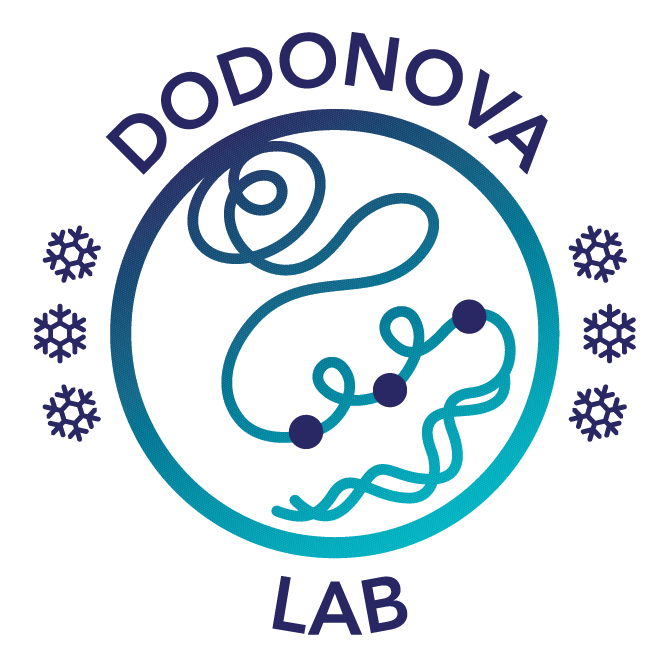
Svetlana Dodonova
Group Leader
ORCID: 0000-0002-5002-8138
EditOrganisational principles and 3D architecture of archaeal chromatin

Group Leader
ORCID: 0000-0002-5002-8138
EditERC Starting Grant 3DchromArchaea


The genomes of all eukaryotes and most archaea are organised into chromatin, a complex of DNA and histone proteins. Chromatin allows for efficient packaging of the genome and adds multiple layers of regulation of DNA repair, replication, and transcription. Chromatin emerged before the divergence of the Archaea and Eukarya, suggesting a shared ancient role of chromatin in gene expression regulation. Although archaea display many hallmarks of eukaryotic chromatin structure, they have also evolved unique features that allow them to adapt to extreme environments.
Deciphering the principles of chromatin architecture in archaea will provide a broader understanding of how chromatin has evolved to package genomes and to enable gene expression regulation across the eukaryotic and archaeal domains. However, structural knowledge about archaeal chromatin remains extremely limited. Our group will use a combination of top-down and bottom-up structural approaches to understand the molecular architecture of chromatin in archaea, which will provide deeper insights into the evolution of chromatin structure.
As a top-down approach, we will employ in situ cryo-electron tomography (cryo-ET) and subtomogram averaging analysis (as in Dodonova et al. Science 2015, Dodonova et al. eLife 2017) to characterise chromatin in near-native conditions inside archaeal cells. As a bottom-up approach, we will reconstitute chromatin complexes of interest in vitro and characterise their structure and function (as in Dodonova et al. Nature 2020). Using cryo-electron microscopy (cryo-EM), we will obtain high-resolution structures of archaeal chromatin complexes. These top-down and bottom-up structural approaches make a powerful combination (as in Dodonova et al. PNAS 2019).
This integrated approach will provide us with a complete picture of chromatin arrangement in several groups of archaea, which will shed light on the evolutionary origins of chromatin organisation and the mechanistic principles of its evolved adaptations.
We have recently uncovered the first structures of the Asgard chromatin assemblies. We show that Asgard histone HHoB forms hypernucleosomes in two states—a compact “closed” conformation conserved across Archaea and an extended “open” conformation unique to Asgard.
Harsh M. Ranawat, Marc K. Cajili, Natalia Lopez-Barbosa, Thomas Quail, Remus T. Dame, Svetlana O. Dodonova*, “Cryo-EM reveals open and closed Asgard chromatin assemblies”, Molecular Cell, 2025, https://doi.org/10.1016/j.molcel.2025.10.001.
